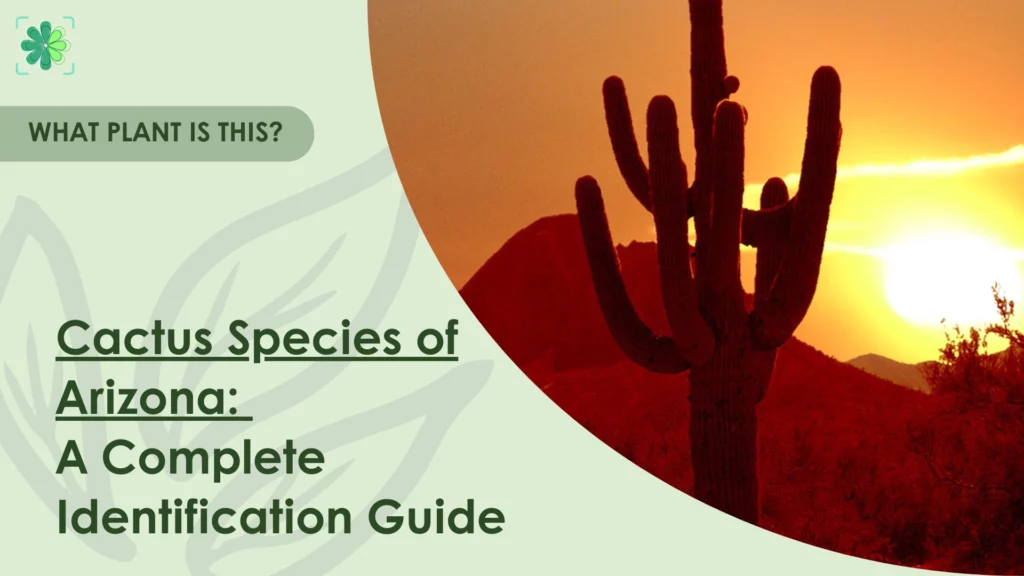
Arizona is one of the best places on Earth to see cacti in their natural environment. From towering saguaros to clusters of prickly pear pads, the state is home to a stunning range of desert plants. In this guide, we’ll explore the most common cactus species of Arizona, how to identify them, and where you’re most likely to see them in the wild. Whether you’re hiking in the Sonoran Desert or browsing for native plants, you’ll find this helpful resource. Let’s get started!
Why Arizona Is a Cactus Hotspot?
After Mexico, which hosts over 850 cactus species, Arizona ranks as one of the most cactus-rich places in the world. What makes it so ideal for cacti?
- It encompasses large parts of the Sonoran and Chihuahuan Deserts, each of which is home to different species.
- The dry climate, intense sunlight, and low rainfall conditions support the survival of cacti.
- Elevation shifts, from desert basins to high plateaus, create a variety of microhabitats.
- Native species range from towering saguaros to tiny pincushions.
- Many areas, such as Saguaro National Park and Organ Pipe Cactus National Monument, are protected, which helps preserve the cactus species of Arizona.
Thanks to these natural advantages, Arizona remains a key region for both cactus biodiversity and research.
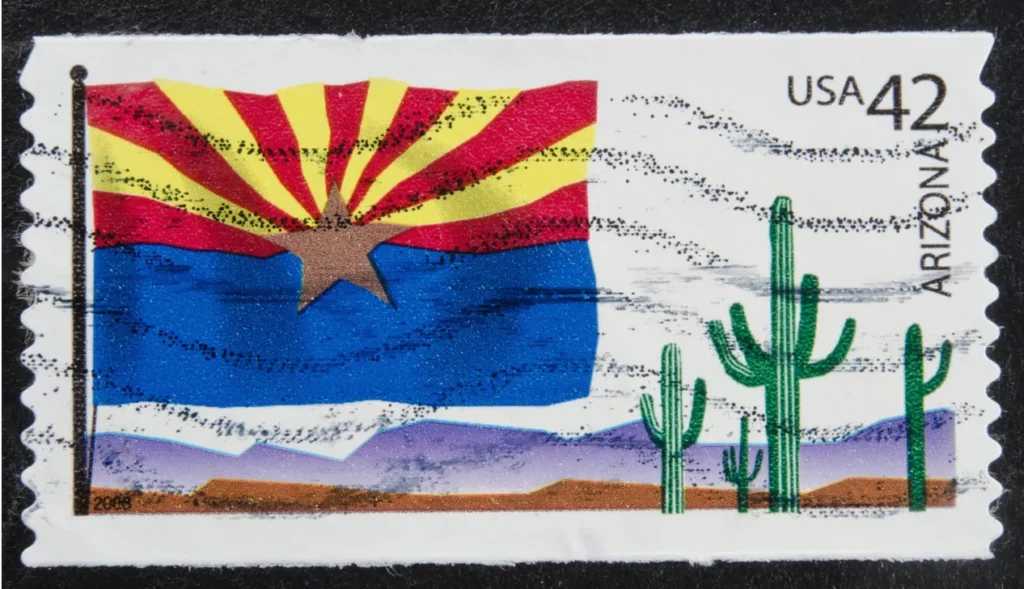
Arizona stamp with saguaros and state flag design
How Many Cacti Are There in Arizona?
Arizona has at least 51 species of native cacti, with the highest concentration found in Pima County, where all 51 species are present. In contrast, Greenlee County, in the east, hosts only 8.
The most iconic is the saguaro (Carnegiea gigantea), found across the Sonoran Desert in Arizona, parts of Sonora (Mexico), and southeastern California. Though exact numbers aren’t tracked, a 2023 iNaturalist project recorded over 19,000 saguaro sightings in the Phoenix area, just a glimpse of their local presence. For anyone interested in cactus species of Arizona, knowing where species are most concentrated can make all the difference.
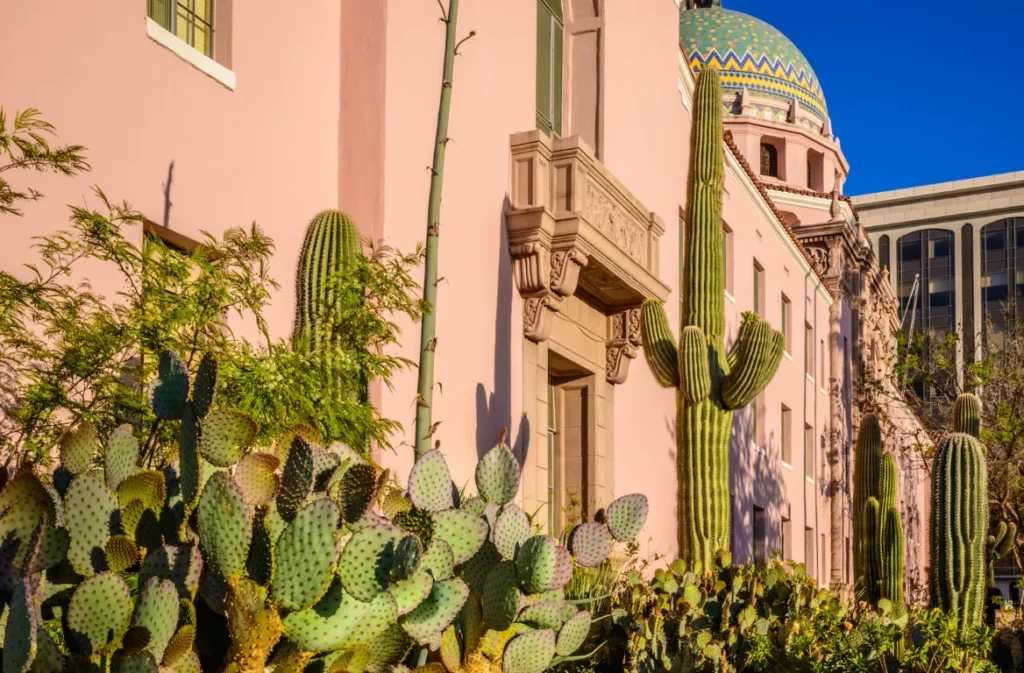
Saguaro and prickly pear outside historic Pima building, Arizona
Most Recognizable Cactus Species of Arizona
Arizona’s deserts are filled with unique cactus types, each with distinct traits and survival strategies. Below are some of the most iconic and easily recognizable cactus species of Arizona.
Saguaro (Carnegiea gigantea)
No cactus represents Arizona more than the saguaro. These tall, tree-like cacti can live for over 150 years and grow up to 40 feet high. They’re found almost exclusively in the Sonoran Desert, and are protected by law due to their slow growth and ecological importance.
- Shape: Tall and columnar with multiple upward-curving arms
- Spines: Short, spaced evenly along vertical ribs
- Flowers: White blooms at the tips, typically in late spring
- Fruit: Red, sweet, and edible by both animals and humans
- Found in: Southern Arizona, especially near Tucson and Saguaro National Park
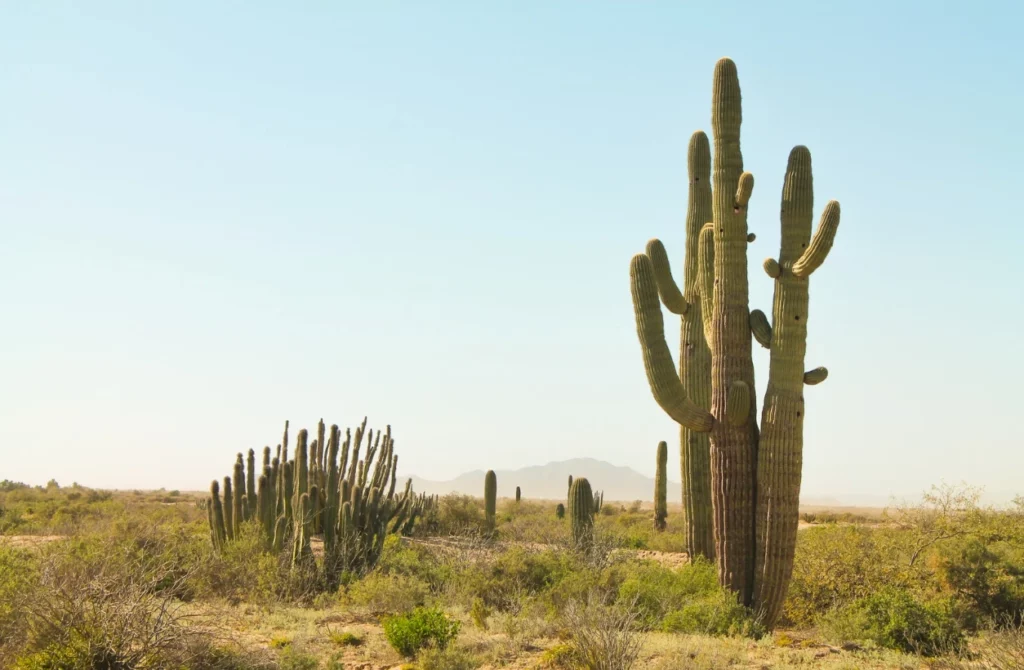
Prickly Pear (Opuntia spp.)
Prickly pear cacti are known for their flat, paddle-shaped pads and colorful fruit. They’re extremely common across the state and play a significant role in desert food chains, providing food for animals and even being incorporated into local cuisine.
- Shape: Flat, wide pads that grow in segments
- Spines: Can be large or small, often accompanied by fine glochids
- Flowers: Bright yellow, orange, or pink
- Fruit: Known as “tunas,” red-purple, often edible
- Found in: All regions of Arizona, from deserts to grasslands

Cholla (Cylindropuntia spp.)
Cholla cacti are notorious for their easily detachable joints, which can cause painful latching onto skin or clothing. Despite their reputation, they’re fascinating plants with beautiful flowers and unique architecture.
- Shape: Cylindrical stem segments, jointed like chains
- Spines: Sharp and covered with a papery sheath
- Flowers: Ranges from green to pink to deep red
- Behavior: Segments break off easily, part of its natural propagation
- Found in: Low deserts, rocky hillsides, and dry washes throughout Arizona
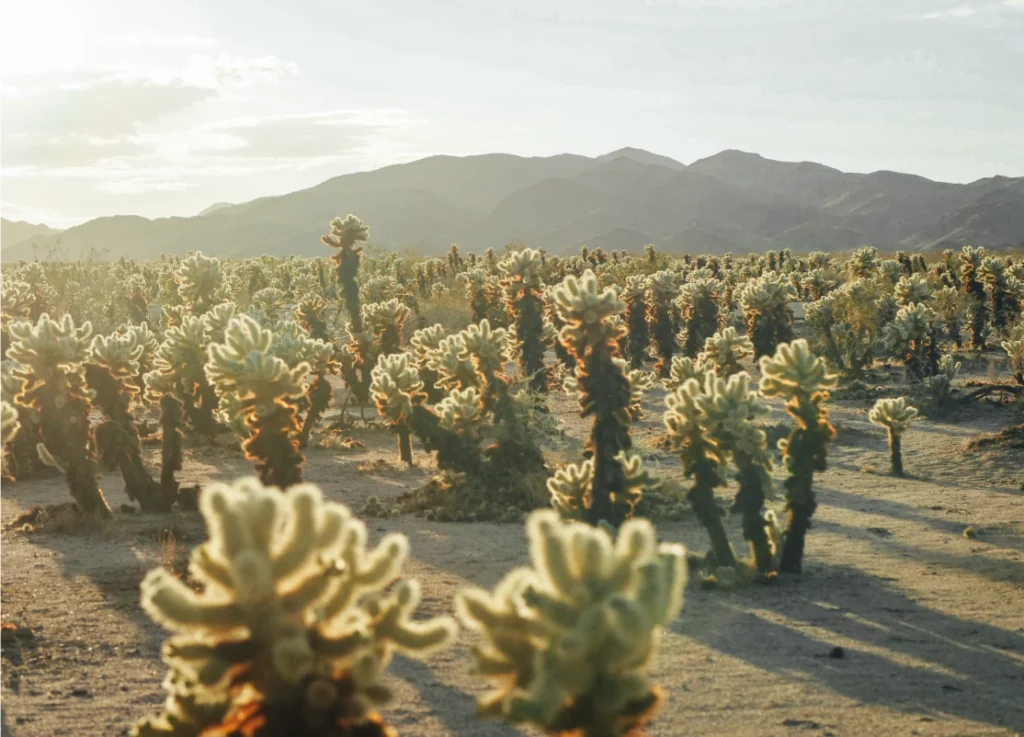
Barrel Cactus (Ferocactus spp.)
These stout, rounded cacti are a classic sight in Arizona’s deserts. Some locals refer to them as “compass cacti” because they often tilt slightly to the southwest. Their thick ribs and dense spines help them survive extreme heat and store large amounts of water.
- Shape: Cylindrical or rounded, often growing 2–4 feet tall
- Ribs: Deep vertical ridges, thick and fleshy
- Spines: Heavy, curved, or hooked spines in yellow, red, or gray
- Flowers: Bright yellow or orange, bloom in a ring on top
- Found in: Southern and central Arizona, including desert valleys and rocky slopes
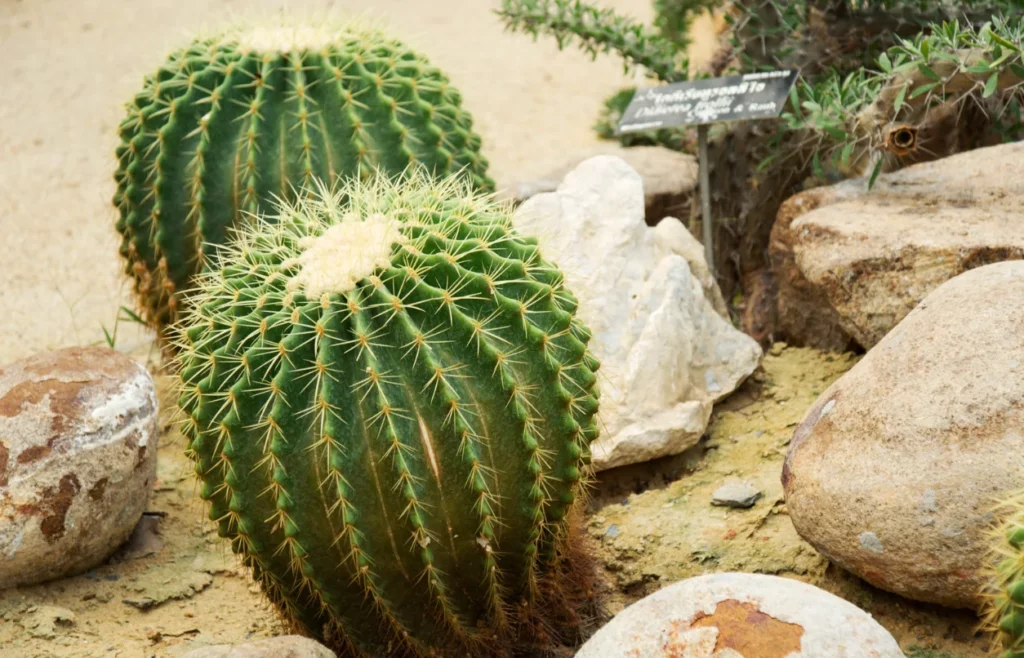
Hedgehog Cactus (Echinocereus spp.)
Named for their bristly appearance, hedgehog cacti are small but full of character. They tend to grow in clusters and are known for producing large, colorful flowers, often much bigger than the plant itself.
- Shape: Short, cylindrical stems growing in clumps
- Spines: Fine but dense, giving a fuzzy look
- Flowers: Large and showy — magenta, purple, or pink
- Fruit: Edible and sweet, sometimes called cactus strawberries
- Found in: Rocky areas, slopes, and canyon edges across the state
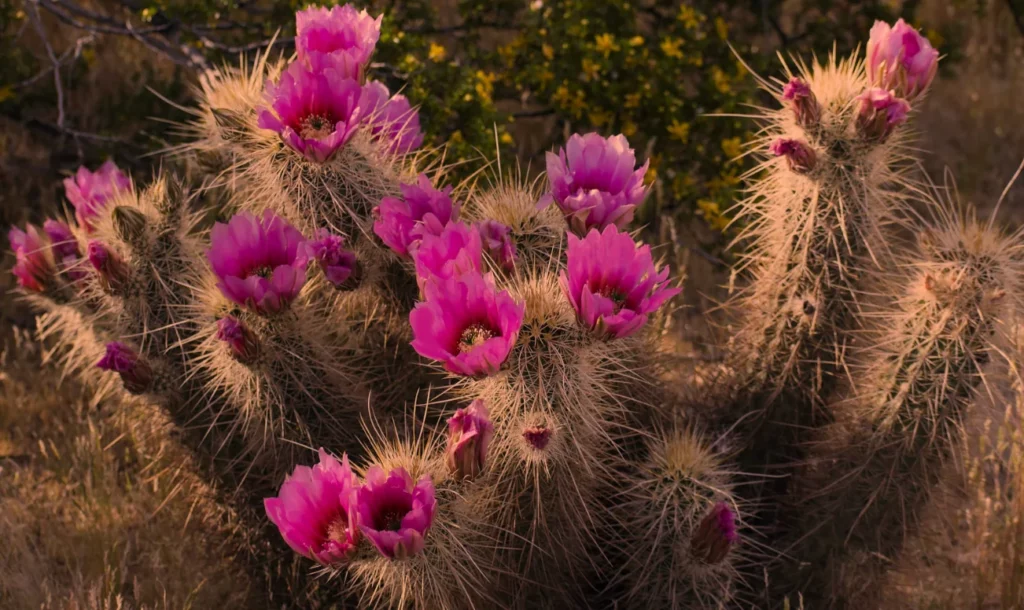
Fishhook Cactus (Mammillaria spp., Sclerocactus spp.)
Fishhook cacti are named for their distinctive hooked central spines, which resemble miniature fishing hooks. They’re small and often go unnoticed until they bloom in spring.
- Shape: Small and round, often solitary
- Spines: Curved, hook-like spines at the top
- Flowers: Pink, red, or white; often forming a crown ring
- Found in: Gravel flats and dry, rocky deserts, especially in central Arizona
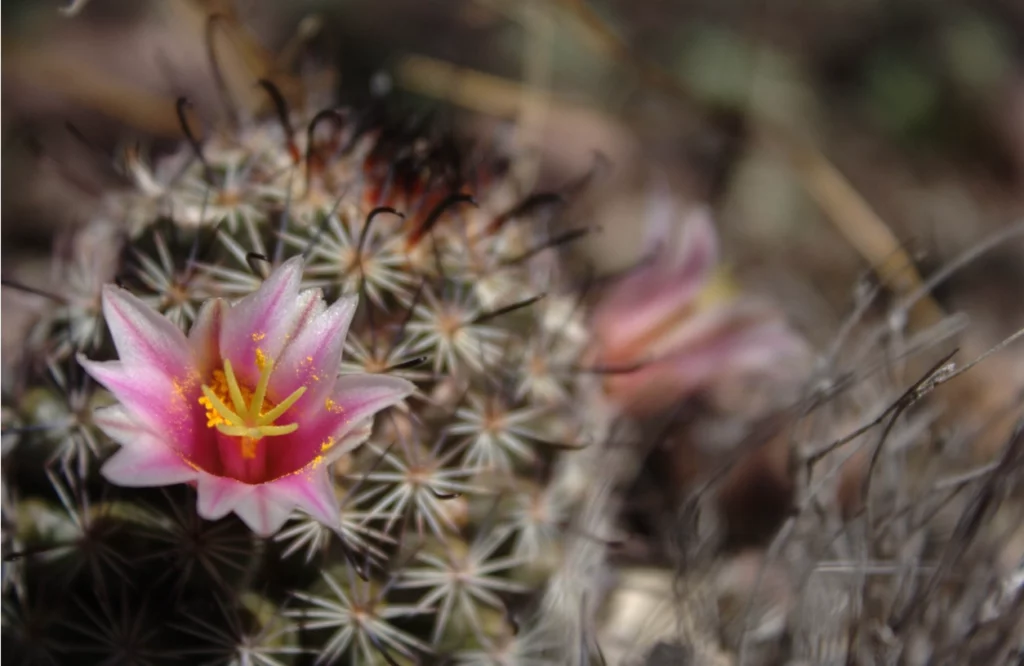
Totem Pole Cactus (Lophocereus schottii var. monstrosus)
Unlike most cacti, the totem pole cactus is nearly spineless and has a smooth, bumpy surface. It’s a mutated form of the organ pipe cactus and is often used as a landscape feature in Arizona yards.
- Shape: Tall and columnar, with irregular, lumpy texture
- Spines: Almost none; surface is smooth and wavy
- Growth: Very slow-growing but can reach 10–12 feet
- Found in: Cultivated gardens, nurseries, and occasionally in the wild in southern Arizona

Pincushion Cactus (Coryphantha spp. and Escobaria spp.)
These tiny cacti live close to the ground and are often overlooked. But during blooming season, they explode with bright flowers and become a favorite for desert photographers.
- Shape: Small, round, or oval
- Spines: Thin and straight or lightly curved
- Flowers: Bright yellow, pink, or violet, depending on species
- Found in: High desert, grasslands, and rocky foothills
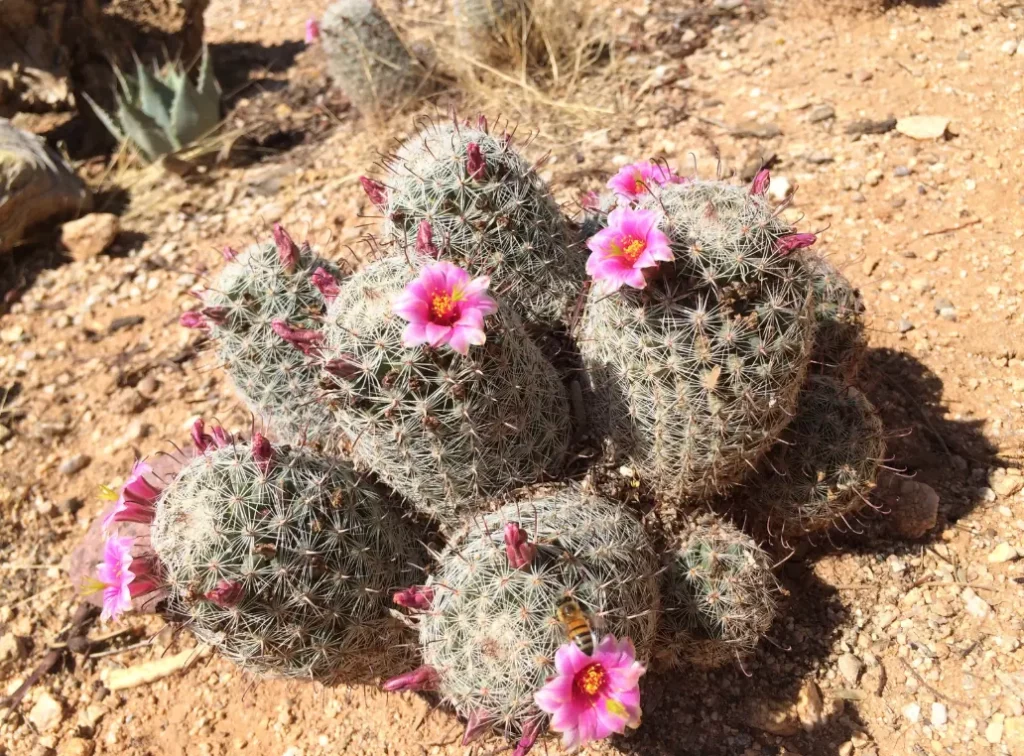
Arizona Cactus Identification Tips
Identifying cactus species of Arizona can feel overwhelming at first, especially when so many types grow in the same environment. The tips below will help improve your Arizona cactus identification skills, whether you’re using a field guide, an app, or just your own eyes.
1. Start with the overall shape
- Is the plant tall and upright (columnar), short and rounded (barrel), or flat and segmented (prickly pear)?
- Shape is the fastest way to narrow down possibilities.
2. Look closely at the spines and areoles
- Areoles are the small raised spots where spines grow. They help confirm that a plant is a true cactus (not Euphorbia or another succulent).
- Some species have dense, fine spines (like those of the hedgehog cactus); others have long, hooked ones (like those of the fishhook cactus).
3. Observe flowers and the blooming season
- Cactus flowers are often species-specific in color, size, and placement.
- Some bloom at the crown (Mammillaria), while others bloom from the sides or tips (saguaro, prickly pear).
- Spring and early summer are peak blooming times in Arizona.
4. Consider the environment
Different species thrive in different areas. For example:
- Saguaro and organ pipe cacti dominate the Sonoran Desert.
- Smaller, cold-tolerant species, such as pincushion cacti, are found in higher elevations.
- If you’re unsure where to start, checking a regional plant guide or map is useful.
5. Use multiple traits, not just one
- Don’t rely solely on size or spine color. Many species look similar when young.
- Combining traits (shape, ribs, flower color, bloom timing) gives a more accurate ID.
6. Try a cactus identification tool
- Apps like Planteyes let you upload a photo and get ID suggestions instantly.
- Use it alongside field photos and charts for better accuracy, especially when dealing with less common species of cactus in Arizona.
Rare or Protected Arizona Cacti
Arizona’s deserts host many iconic cacti, but some are off-limits due to legal protection. These rare cactus species of Arizona are protected for their ecological value, slow growth, or limited distribution range. For example:
- Saguaro cactus (Carnegiea gigantea) is legally protected. It’s illegal to dig up, harm, or transport one from the wild without a permit.
- Organ pipe cactus (Stenocereus thurberi), found mainly in Organ Pipe Cactus National Monument, is another protected species with a limited range in the U.S.
- Pima pineapple cactus (Coryphantha scheeri var. robustispina) is listed as endangered and exists only in specific parts of southern Arizona.
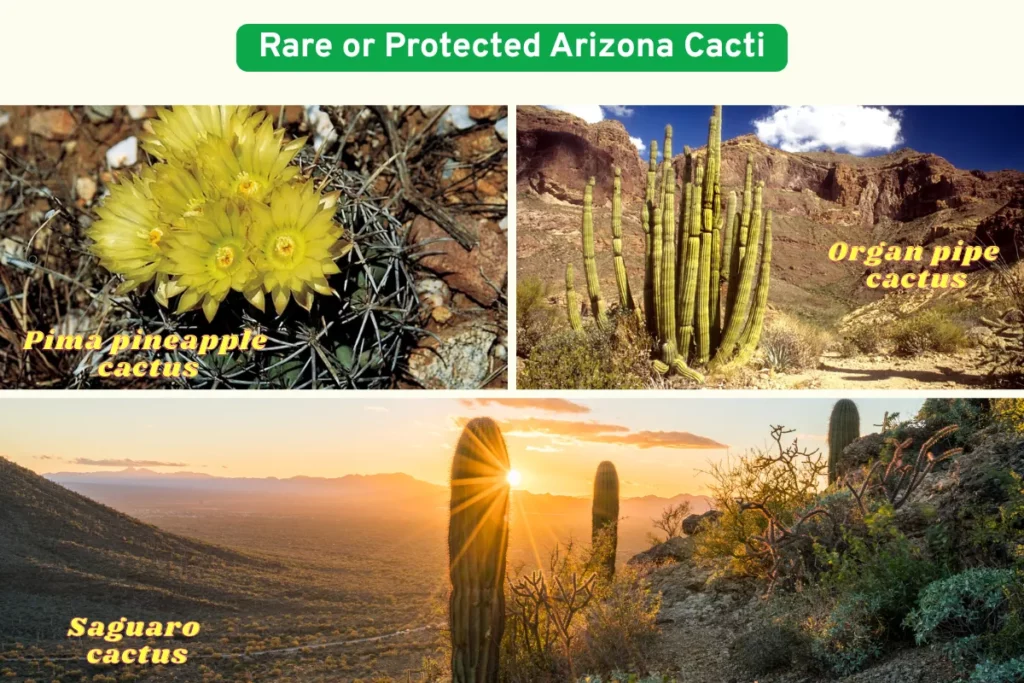
If you’re unsure whether a cactus is protected, it’s always best to leave it alone. Many botanical gardens, desert parks, and nurseries offer legal and ethical ways to admire or buy native Arizona cacti species.
Conclusion
Arizona is home to a wide variety of cacti, from the massive saguaro to tiny flowering pincushions. Understanding the different cactus species of Arizona not only helps with care and appreciation but also supports responsible gardening and conservation. I hope this guide has helped you become familiar with the region’s most iconic types and has improved your confidence in field identification.
If you want faster, visual-based support for spotting species, consider using a reliable tool like the Planteyes cactus identification app. It’s a great companion whether you’re in the garden or out in the desert.
FAQs
How many cactus species are there in Arizona?
Arizona is home to at least 51 native cactus species, with the greatest diversity found in Pima County, where all 51 species occur. Other counties, like Greenlee, have far fewer.
What’s the best way to learn Arizona cactus identification?
Start by observing growth shape, spine patterns, and flowers. Use a visual field guide or a trusted app, such as Planteyes, to help confirm IDs.
Are all cactus species of Arizona protected?
No, but some, such as the saguaro and Pima pineapple cactus, are protected due to their ecological significance or limited range.
Can I grow Arizona cacti at home?
Yes. Many native species, such as prickly pear, barrel cactus, and hedgehog cactus, are available at nurseries and thrive well in pots or xeriscapes.


